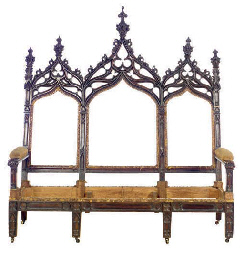Week eight was busy with WAR and more off site field trips. Monday, I continued to read through the WAR exhibition catalogue. Later in the day, the education department met with curators Anne Tucker, Will Michels, and Natalie Zelt to discuss the educational space that will be placed in the last gallery of the exhibition. First, Natalie Zelt gave a presentation of exhibition highlights, the titles of which I quickly jotted down so I could include them in my own list. Staff then discussed the three types of audience members who will visit (military, general public, and the arts/photography community) and that these individual groups will all be expecting different information and experiences from the show. Because the exhibition is so big and often graphic, there was discussion of putting together a map of all the galleries, with the more brutal areas marked out (so people with young kids or sensitive viewers can avoid as they see fit). How best to prepare the docents for the material was also brought up and Dr. Ramirez mentioned to me that I might put together a list of teacher resources dealing with how to approach difficult subjects, such as conflict, in the classroom.
Tuesday morning I helped Jason register people for the Summer Mini-Conference, in which artists and educators can learn about art history, art making, and art education in different sessions. Wednesday, the interns visited the conservation department at the Rosine Building. First, Kress Foundation Conservation Fellow Melissa Gardner introduced us to the department's paintings lab. She talked about her own educational background (and about how extremely competitive the conservation world is) and introduced us to a few of her projects. After she led us around the analytical lab, we had our second meeting of the day with Conservation Assistant Trevor Boyd. Boyd talked about the silver coating project and the large amount of work that the team had recently completed for American Made - including recreating a rare Gothic Revival settee from (basically) just its frame, and figuring out how to put together George Nelson's Comprehensive Storage System with Desk without any instructions... or a picture of what it should look like once assembled. Overall, it was a really cool visit.
 |
| An example of a Gothic Revival settee |
Conservation inside the Beck Building
(Sorry - I couldn't find any pictures of Rosine!)
Thursday, I assisted Family Programs sketching activity in the morning and worked on WAR in the afternoon. On Friday, George took the interns out to lunch at local Vietnamese restaurant Van Loc before traveling to the Menil Collection to met Associate Curator Michelle White. There are so many truly wonderful aspects of the Menil, but I won't go into detail about too many of them. Foremost however, the Menil is beautifully constructed. It is primarily lit with natural light (you can experience light changes in the lobby as clouds come and go) and has clean white walls and dark wood floors, which are slightly warn from the footsteps of its visitors. These aspects, as well as the fact that it's relatively small and contained on a single floor, were utilized to avoid museum fatigue, a goal of the de Menils, the museum's remarkable founders.
We traveled into the preparations lab (to see models of the museum and its permanent collection in one twelfth scale). Then, we went into a few of the storage rooms. Arranged "cabinet of curiosity" style, two dimensional works hang from floor to ceiling and sculptures are placed on stands and in cabinets. In short, these rooms were the most intimate art spaces I think I've ever been in. The de Menil's were famous collectors of surrealist art so the first room contained groups of Ernst sculpture, followed by a wall or two of paintings and drawings by René Magritte. There were also shadow boxes by Joseph Cornell, drawings, paintings, and collage by Picasso, paint and mounds of pigment by Kline, sculptures by Oldenburg, and Warhol or two. It was magical - the candy store equivalent for any art history enthusiast. This intelligently clustered arrangement seemed like it would be rare but extremely useful from an academic perspective. It was if the pages of a catalogue had spread out and come to life, allowing one to view small periods of artistic activity for an individual artist with one look. Curator White made it all the more fun by providing us with background stories on certain works and quizzing us on our abilities to name artists. The tour of the Menil's storage has definitely been one of the highlights and privileges of the summer.
Exterior of the Menil
Menil gallery space
Scale model of museum in the exhibitions
department
René Magritte (1898–1967), L'empire des lumiéres
(The Dominion of Light), 1954





No comments:
Post a Comment